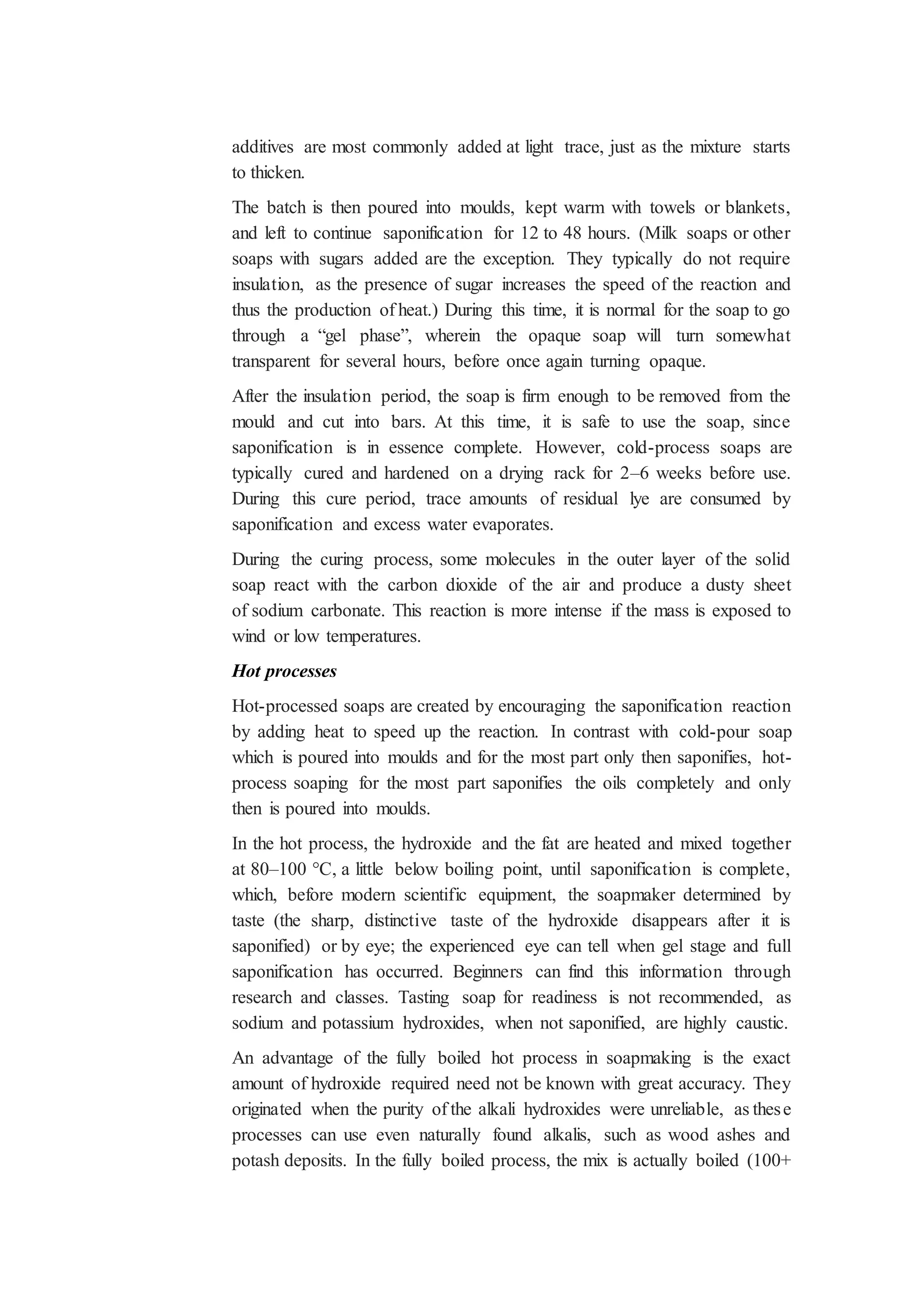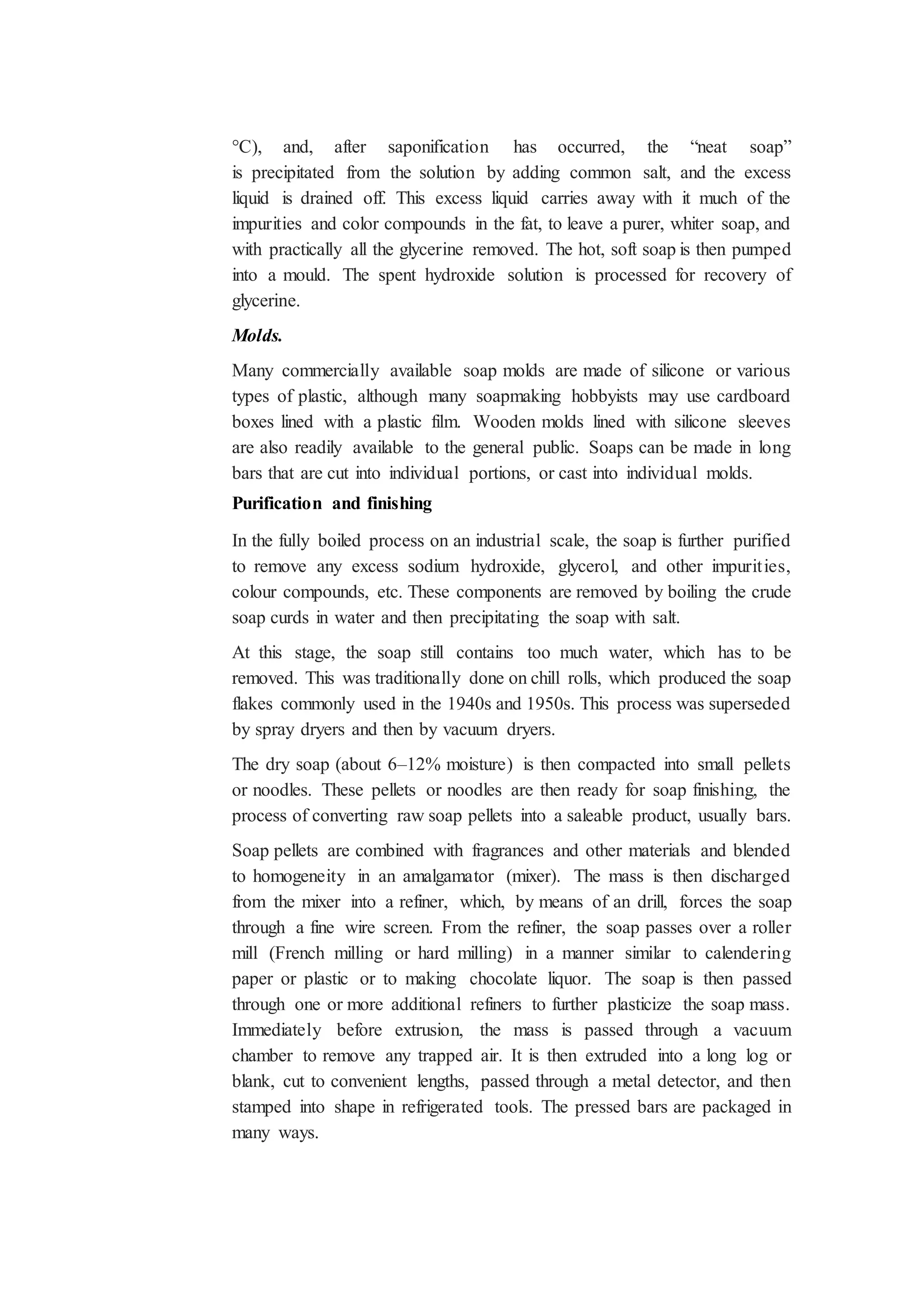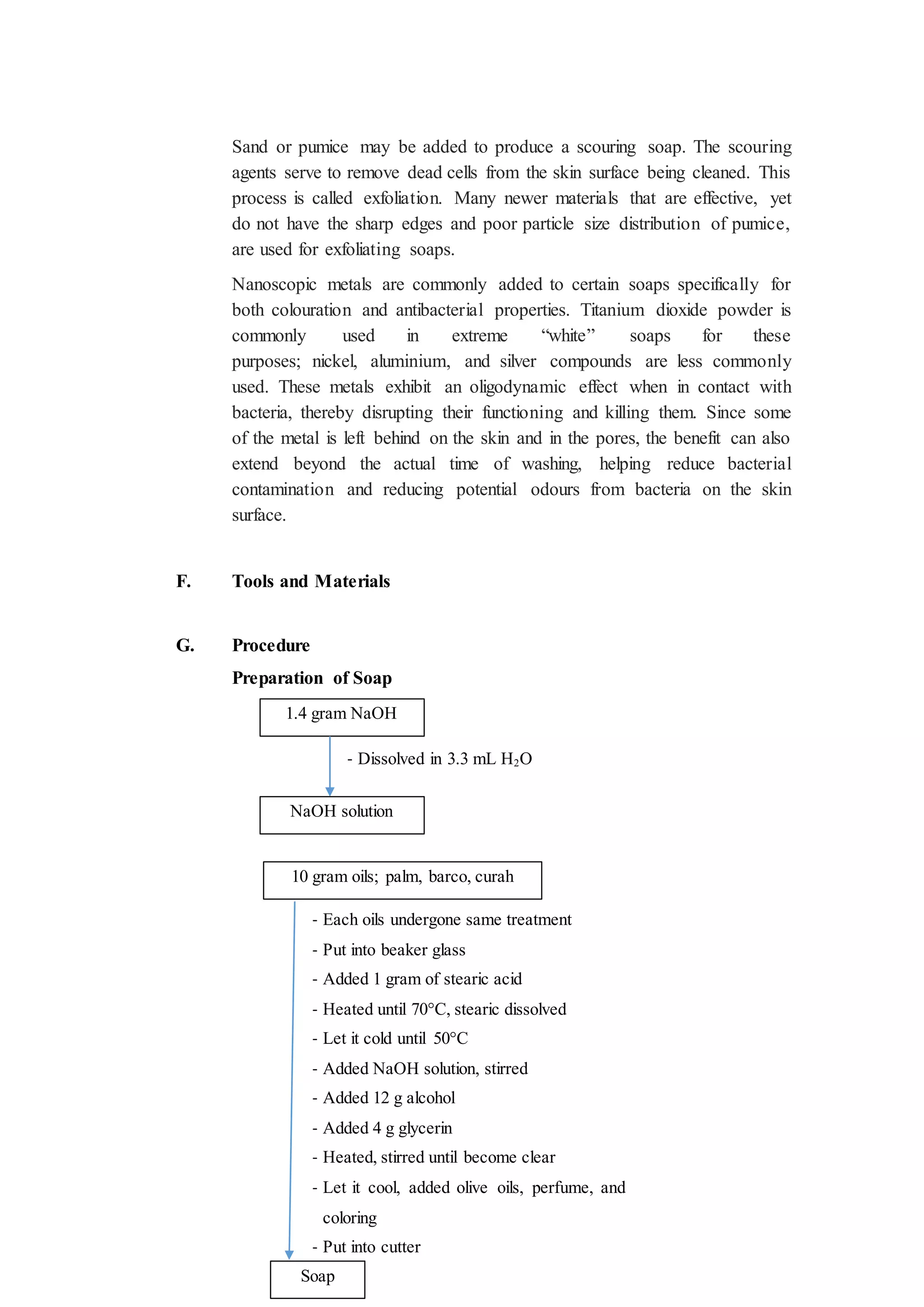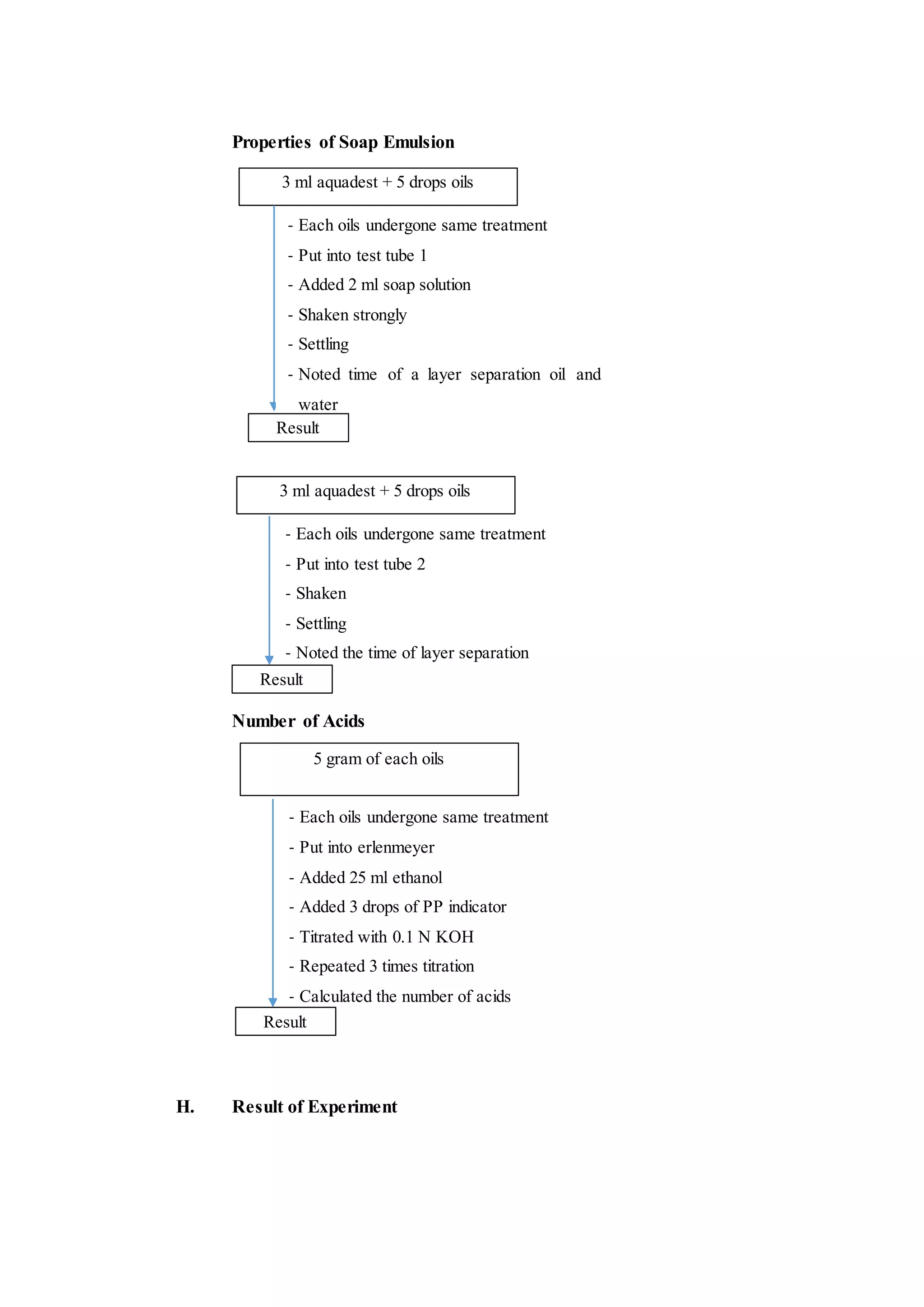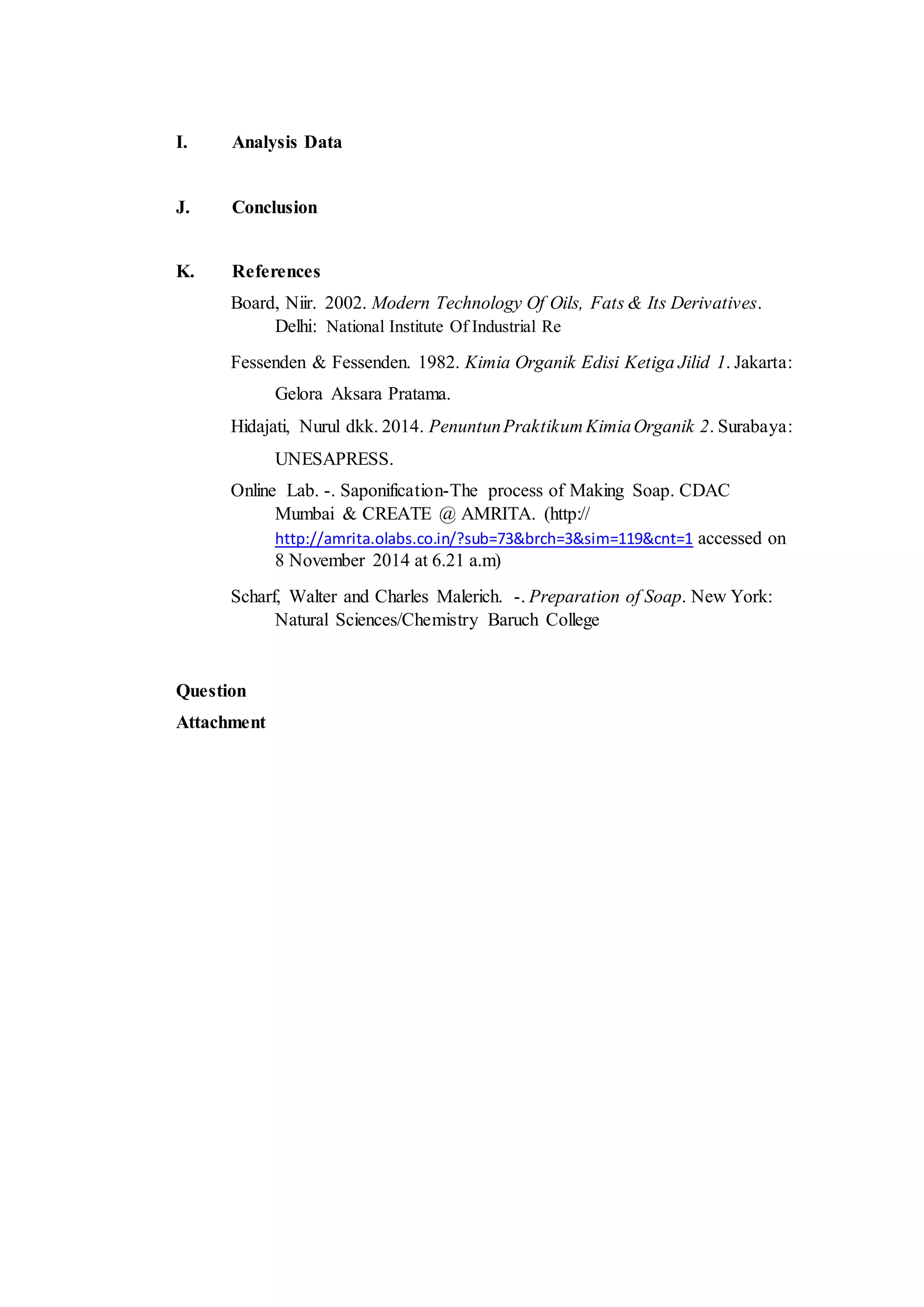The document provides instructions for making soap through both cold and hot processes. It first discusses the basic chemistry involved - fatty acids react with lye (sodium hydroxide or potassium hydroxide) through saponification to form soap and glycerol. For cold process soapmaking, exact measurements are needed and the mixture is poured into molds to saponify for 12-48 hours before cutting. For hot process, the fats and lye are heated and mixed at 80-100°C until fully saponified, then poured into molds. Both processes form soap through the reaction of fatty acid triglycerides with lye.
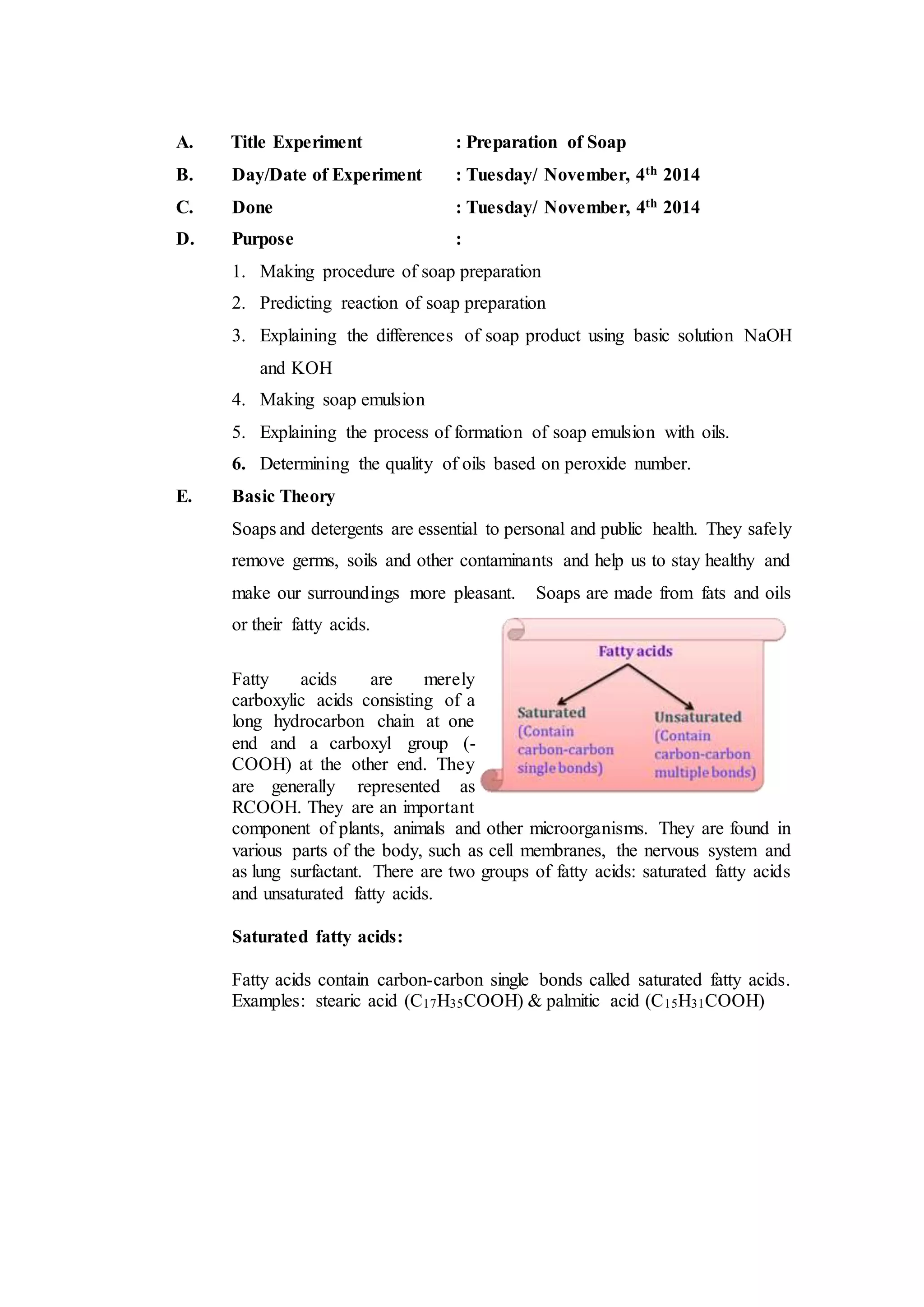

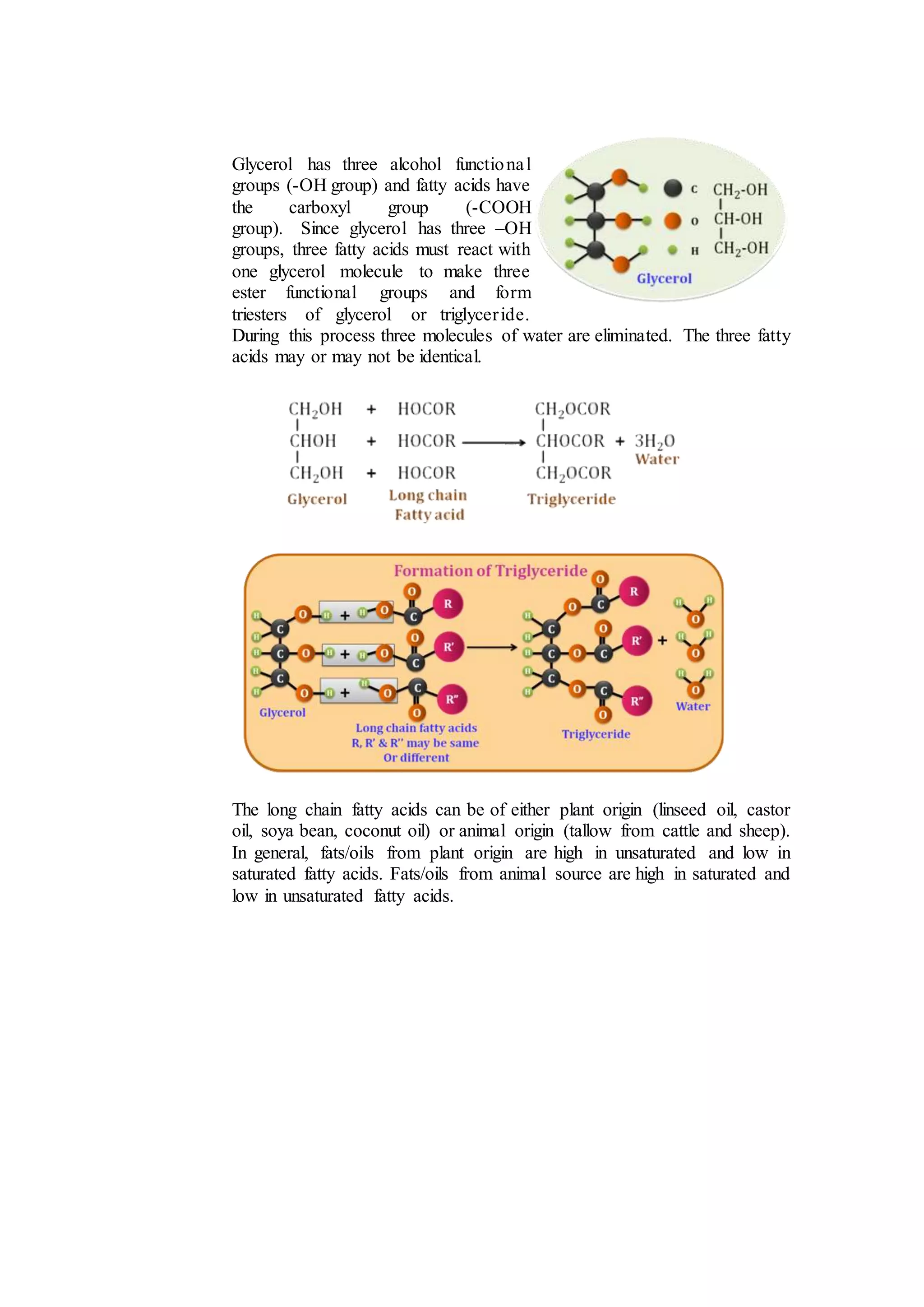
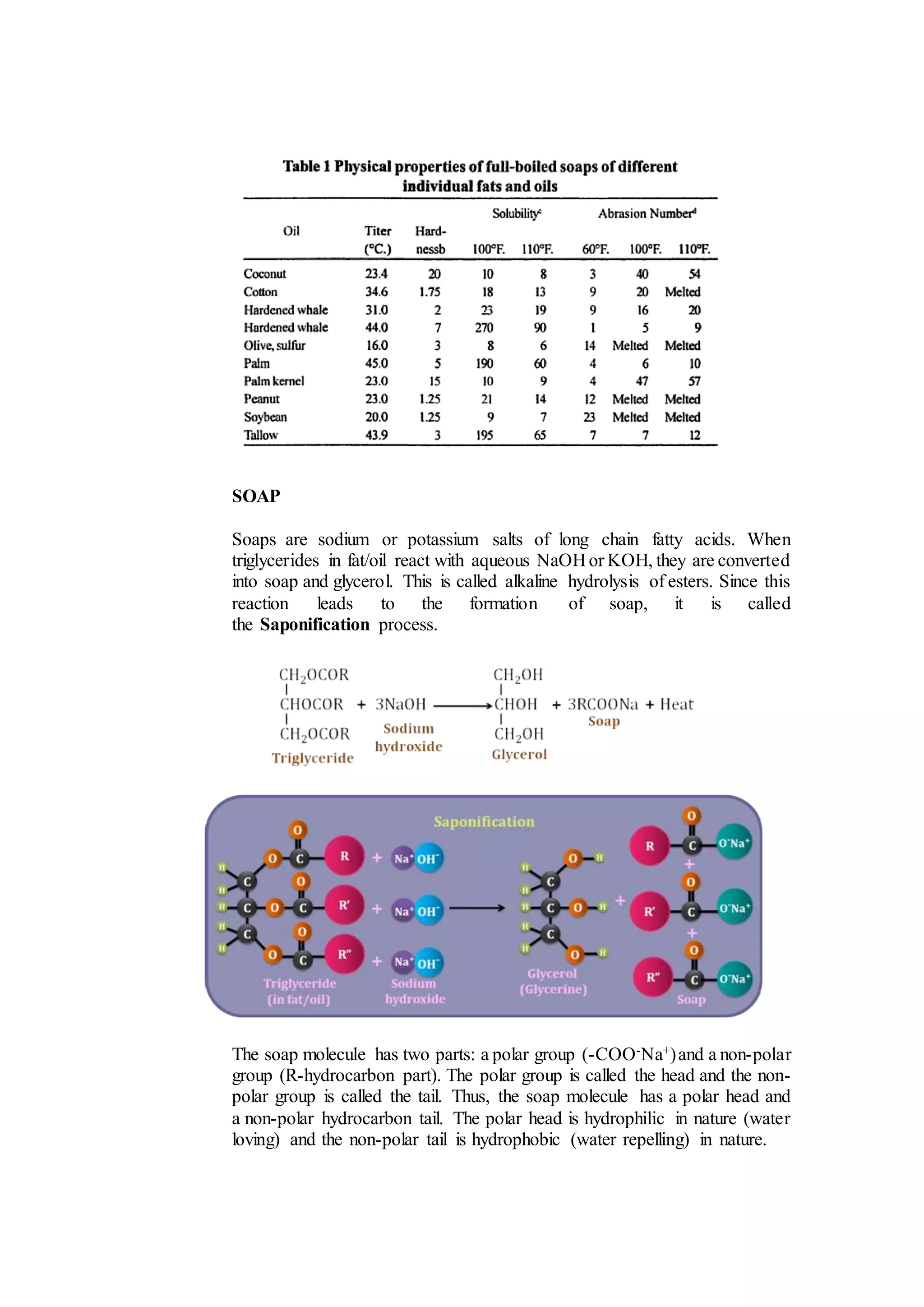
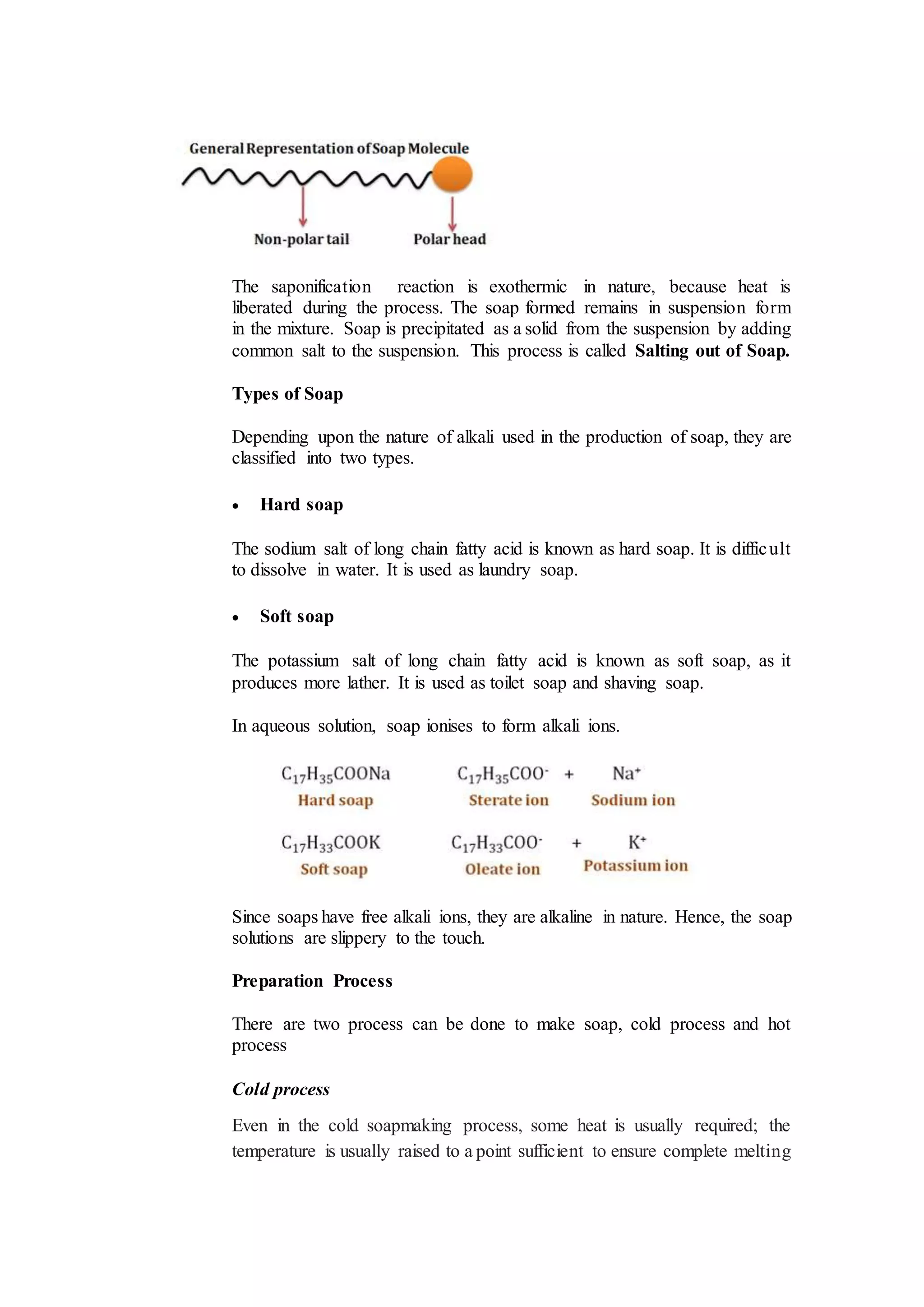
![of the fat being used. The batch may also be kept warm for some time after
mixing to ensure the alkali (hydroxide) is completely used up. This soap is
safe to use after about 12–48 hours, but is not at its peak quality for use for
several weeks.
Cold-process soapmaking requires exact measurements of lye and fat
amounts and computing their ratio, using saponification charts to ensure the
finished product does not contain any excess hydroxide or too much free
unreacted fat. Saponification charts should also be used in hot processes,
but are not necessary for the “fully boiled hot-process” soaping.
Historically, lye used in the cold process was made from scratch using
rainwater and ashes. Soapmakers deemed the lye solution ready for use
when an egg would float in it. Homemade lye making for this process was
unpredictable and therefore eventually led to the discovery of the sodium
hydroxide by English chemist Sir Humphry Davy in the early 1800s.
A cold-process soapmaker first looks up the saponification value for each
unique fat on an oil specification sheet. Oil specification sheets contain
laboratory test results for each fat, including the precise saponification value
of the fat. The saponification value for a specific fat will vary by season and
by specimen species.[28] This value is used to calculate the exact amount of
potassium hydroxide to react with the fat to form soap. The saponification
value must be converted into an equivalent sodium hydroxide value for use
in cold process soapmaking. Excess unreacted lye in the soap will result in
a very high pH and can burn or irritate skin; not enough lye leaves the soap
greasy. Most soap makers formulate their recipes with a 2–5% deficit of lye,
to account for the unknown deviation of saponification value between their
oil batch and laboratory averages.
The lye is dissolved in water. Then oils are heated, or melted if they are
solid at room temperature. Once the oils are liquefied and the lye is fully
dissolved in water, they are combined. This lye-fat mixture is mixed until
the two phases (oils and water) are fully emulsified. Emulsification is most
easily identified visually when the soap exhibits some level of “trace”,
which is the thickening of the mixture. (Modern-day amateur soapmakers
often use a stick blender to speed this process). There are varying levels of
trace. Depending on how additives will affect trace, they may be added at
light trace, medium trace, or heavy trace. After much stirring, the mixture
turns to the consistency of a thin pudding. “Trace” corresponds roughly to
viscosity. Essential oils and fragrance oils can be added with the initial
soaping oils, but solid additives such as botanicals, herbs, oatmeal, or other](https://image.slidesharecdn.com/titleexperiment-141115012114-conversion-gate02/75/Title-experiment-6-2048.jpg)
